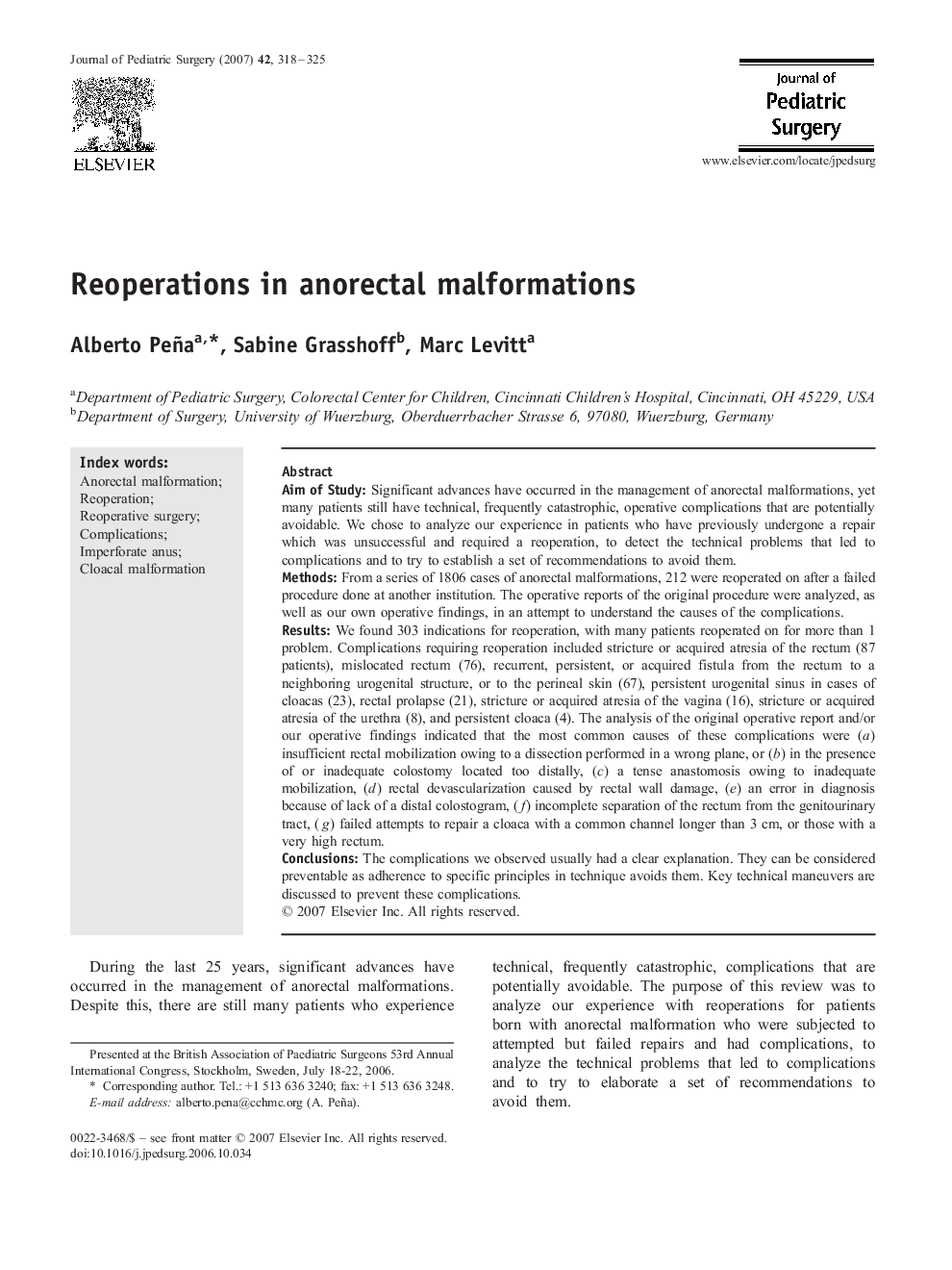| کد مقاله | کد نشریه | سال انتشار | مقاله انگلیسی | نسخه تمام متن |
|---|---|---|---|---|
| 4160549 | 1273847 | 2007 | 8 صفحه PDF | دانلود رایگان |

Aim of StudySignificant advances have occurred in the management of anorectal malformations, yet many patients still have technical, frequently catastrophic, operative complications that are potentially avoidable. We chose to analyze our experience in patients who have previously undergone a repair which was unsuccessful and required a reoperation, to detect the technical problems that led to complications and to try to establish a set of recommendations to avoid them.MethodsFrom a series of 1806 cases of anorectal malformations, 212 were reoperated on after a failed procedure done at another institution. The operative reports of the original procedure were analyzed, as well as our own operative findings, in an attempt to understand the causes of the complications.ResultsWe found 303 indications for reoperation, with many patients reoperated on for more than 1 problem. Complications requiring reoperation included stricture or acquired atresia of the rectum (87 patients), mislocated rectum (76), recurrent, persistent, or acquired fistula from the rectum to a neighboring urogenital structure, or to the perineal skin (67), persistent urogenital sinus in cases of cloacas (23), rectal prolapse (21), stricture or acquired atresia of the vagina (16), stricture or acquired atresia of the urethra (8), and persistent cloaca (4). The analysis of the original operative report and/or our operative findings indicated that the most common causes of these complications were (a) insufficient rectal mobilization owing to a dissection performed in a wrong plane, or (b) in the presence of or inadequate colostomy located too distally, (c) a tense anastomosis owing to inadequate mobilization, (d) rectal devascularization caused by rectal wall damage, (e) an error in diagnosis because of lack of a distal colostogram, (f) incomplete separation of the rectum from the genitourinary tract, (g) failed attempts to repair a cloaca with a common channel longer than 3 cm, or those with a very high rectum.ConclusionsThe complications we observed usually had a clear explanation. They can be considered preventable as adherence to specific principles in technique avoids them. Key technical maneuvers are discussed to prevent these complications.
Journal: Journal of Pediatric Surgery - Volume 42, Issue 2, February 2007, Pages 318–325